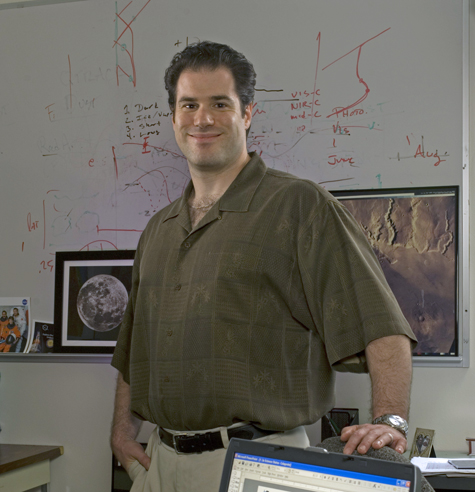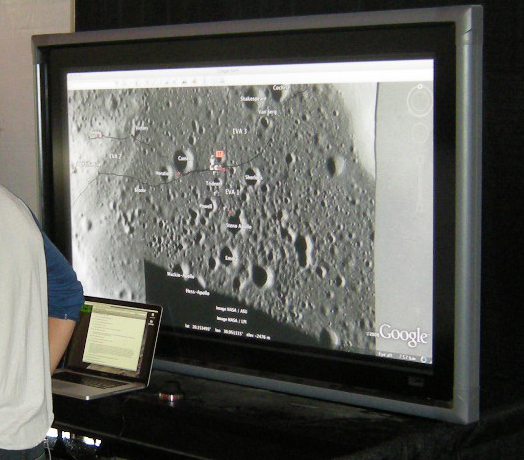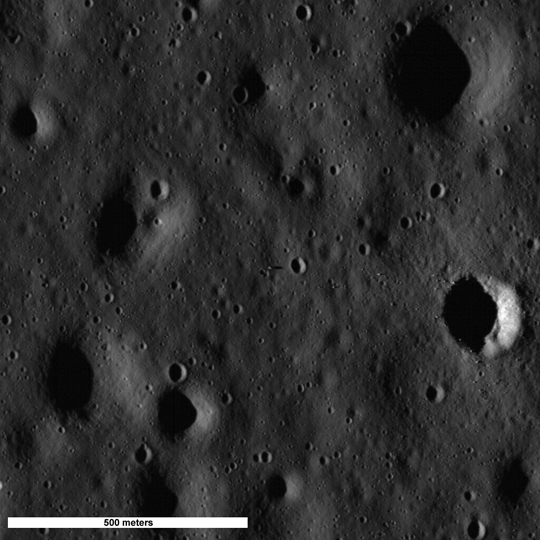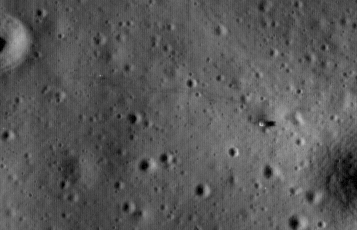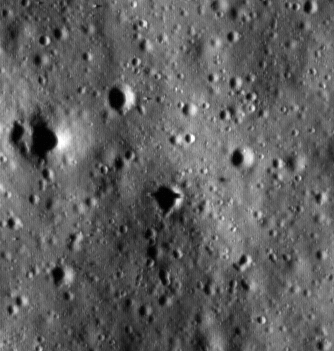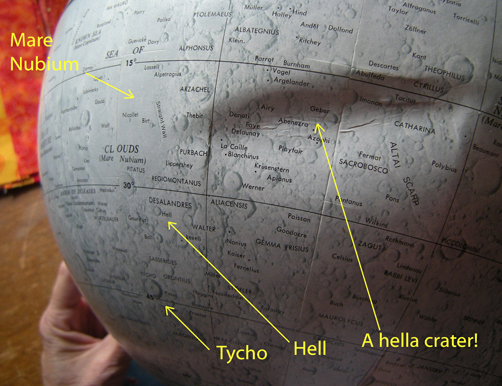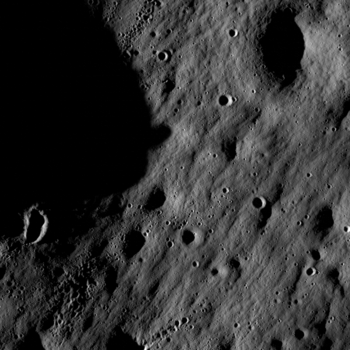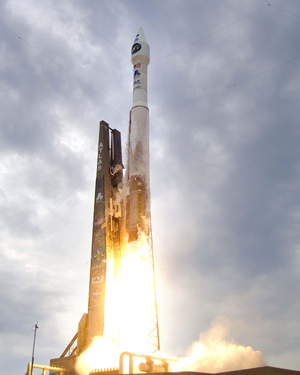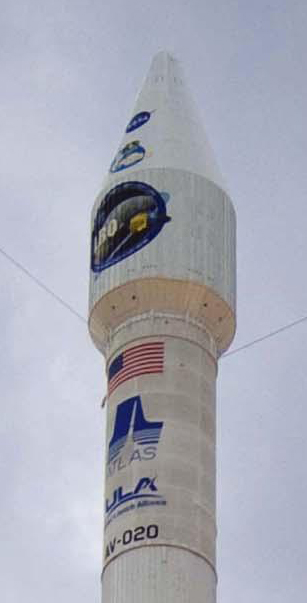Naked Astronauts, etc.
Tuesday, December 15th, 2009
Sometimes the best questions are facetious.
This morning I was attending the moon sessions at the American Geophysical Union conference in San Francisco. One of the talks was by Justin Kasper, who works on the cosmic ray detection experiment (CRaTER) on the Lunar Reconnaissance Orbiter. After his talk, one of the audience members (Mark Robinson of the LRO Camera team) asked what have to be the most unexpected questions of the meeting:
“So, is an astronaut’s suit dangerous? In a theoretical sense, would it be better for an astronaut to go naked?”
Before I tell you the answer, let me tell you why the question is not as crazy as it seems.
Kasper had just reported on the most unexpected finding so far by the cosmic ray experiment. It was supposed to measure how much radiation on the moon is coming from outer space (cosmic rays) and the sun (mostly protons from the solar wind). But they have found that the moon itself is a significant source of radiation.
In open space, CRaTER counted about 33 cosmic rays per second. (By the way, that’s an unusually high number. The sun is currently in one of the most quiet phases ever recorded in its magnetic cycle, which means that it is not doing as good a job as usual of blocking cosmic rays from outside the solar system.) When LRO got into lunar orbit, about 50 kilometers above the surface, the count dropped to 22 cosmic rays per second. Sounds great — you’re safer on the moon than in outer space.
But here’s the catch. If you’re on the moon, the moon ought to block half the cosmic rays coming from outer space! Even if you’re orbiting 50 kilometers above the moon, the moon should still block about 14 out of 33 cosmic rays, letting only 19 through. Because CRaTER is recording 22 per second, the remainder of the radiation (3 events per second) must be coming from the moon!
At this point, they can’t be sure why, but Kasper conjectured that this radiation is produced by cosmic rays that hit the surface, smash up an atomic nucleus, and re-radiate back into space.
What does this have to do with space suits? Well, your space suit contains lots of heavy atomic nuclei for the cosmic rays to smash into. So if you’re an astronaut, you’re going to be exposed to some radiation emanating from your space suit, for the same reason. That’s why Robinson asked his question.
Now really we don’t recommend future astronauts to do the full moon-ty. There are good reasons for wearing a space suit, such as the inconvenient fact that humans need air to breathe. However, Kasper did say that we should think carefully about what we make space suits out of. Are some materials better at absorbing cosmic rays than others? It’s also relevant for building shelters on the moon. “The results suggest that building a wall is a little more helpful than building an umbrella,” he said.
Actually, this comment was facetious too, because a flimsy umbrella isn’t going to help you much against cosmic rays. In an interview last week, Jack Burns of the University of Colorado, a science advisor for NASA, told me that one of the best defenses against cosmic rays is actually a tank of water. (That is one more reason why discovering water on the moon is important.)
